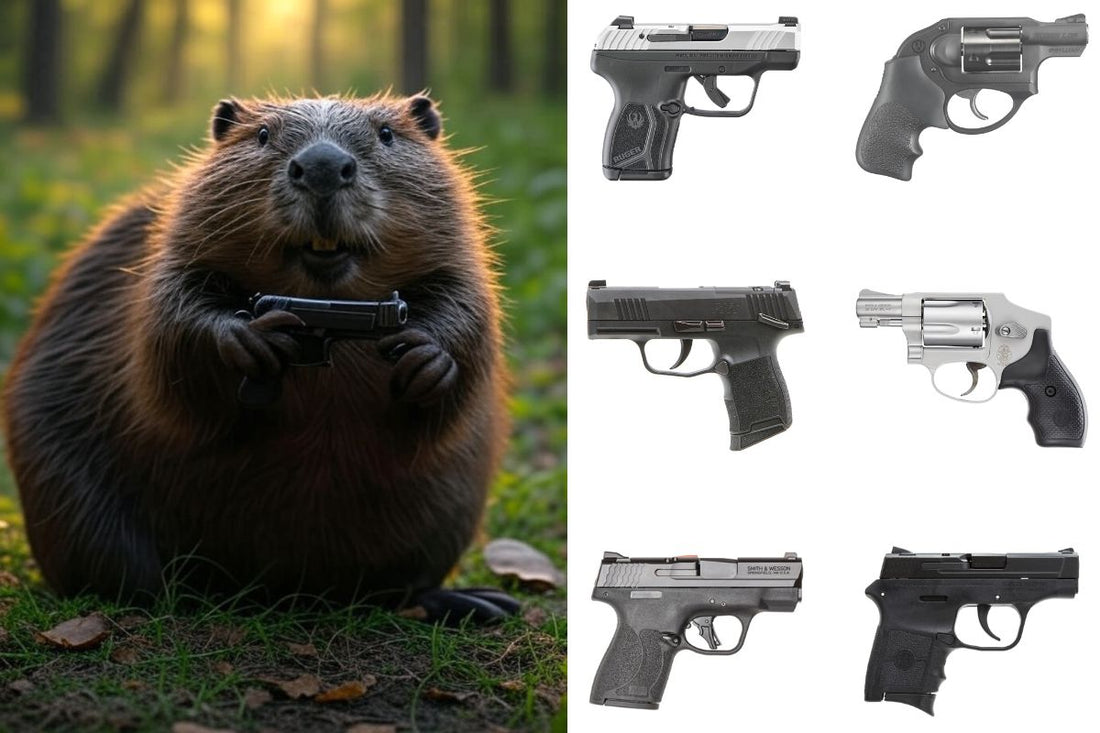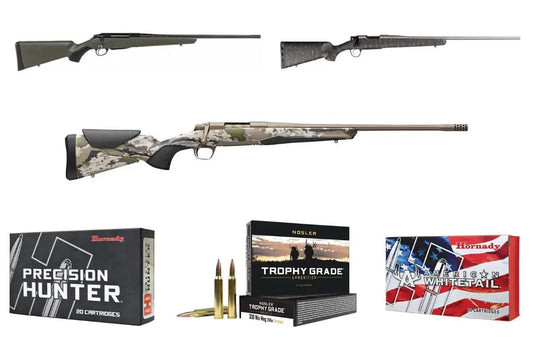
Pocket Guns, Big Debate: Lifesavers in Your Jeans—or Snappy, Miss-Prone Compromises?
|
What Pocket Guns Do Well |
Where They Struggle |
Best Use Cases |
Who Should Probably Avoid |
|
Ultra-concealable; you’ll actually carry them |
Short sight radius + light weight = tougher recoil control and precision |
Discreet daily carry, NPEs, backup gun, deep concealment |
Newer or recoil-sensitive shooters unwilling to train, or anyone needing duty-gun performance |
TL;DR for Skimmers
Pocket guns (think micro .380s, true subcompact 9mms, and lightweight .38 snubs) are legitimate self-defense tools if you accept tradeoffs and train to the platform. They’re easier to carry than shoot: the same small, light form factor that disappears in a pocket also amplifies recoil impulse (“snappiness”) and makes precise hits beyond 7–10 yards a bigger ask. Pick reliable models, choose ammunition that meets or approaches FBI 12–18" gel penetration guidance, and budget real practice time. The gun you carry beats the one left at home—but small guns are unforgiving of sloppy technique.
What we mean by “pocket gun”
“Pocket gun” isn’t a SAAMI category; it’s the carry reality: pistols or revolvers that actually fit (safely holstered) in a front pocket without printing like a brick. That typically includes:
- Micro .380 ACP autos (Ruger LCP Max, Glock 42, S&W Bodyguard .380)
- True micro/subcompact 9mm autos (SIG P365 family, Springfield Hellcat, S&W Shield Plus, Glock 43—some will “pocket” for some body types, many won’t)
- Airweight .38 Special snub revolvers (S&W 642/442, Ruger LCR, Taurus 856 Ultralite)
- Edge cases: .32 ACP tip-ups (Beretta Tomcat 3032) and rimfire pocketable pistols (.22 LR “lite rack” autos or .22 snubs)
The case for pocket guns
1) You’ll carry it, everywhere the law allows.
Comfort and concealment drive carry compliance. A light, flat gun you forget you’re wearing is the one that actually rides with you into awkward real-life contexts (summer clothes, social events, quick errands). As Massad Ayoob puts it about the classic snub, “[It] fits the side pocket, the hip pocket, the coat pocket…”—it simply goes places. –BackwoodsHome.com
2) Close-range fights don’t demand a race-gun.
Most credible datasets and student debriefs from trainers like Tom Givens show civilian defensive shootings are overwhelmingly close (single-digit yardage). Givens has debriefed ~60–67 students in shootings with the vast majority prevailing; distances commonly cluster inside roughly 3–7 yards. That doesn’t excuse poor skill, but it validates that a small, fast-on-target gun can be “enough” if you can actually get it into the fight. –rangemaster.com
3) Modern micro-guns aren’t 1990s “mouse guns.”
Today’s micro-compacts deliver real features: decent sights, improved triggers, higher capacity (e.g., LCP Max 10+1/12+1, P365 10–15+1 variants), and reliable feeding with modern JHPs in many models. That narrows the gap between “deep concealment” and “duty-ish” performance—if you accept the shootability tax.
The case against pocket guns
1) “Snappy” is physics, not attitude.
Recoil momentum stays the same for a given cartridge; lighter guns accelerate more from the same impulse. Tiny grip frames give you less leverage to counter muzzle rise, and shorter sight radius magnifies alignment error. Translation: splits get slower, hits get looser, fatigue arrives sooner—especially under stress.
2) Accuracy standards don’t care that the gun is cute.
Inside a lane, many shooters are shocked how much harder a 10-oz .380 or 14-oz snub is to run compared to a 25-oz compact. Small controls, heavier DA pulls (snubs), and minimal sights penalize anyone without reps. It’s no accident you’ll hear seasoned trainers say snubs are “expert’s guns.”
3) Ammunition windows are narrower.
Short barrels trade velocity. In gel testing round-ups, .380 ACP often struggles to both expand and penetrate to the FBI’s 12–18″ guidance; a few loads do “okay,” many are compromise-y. .38 Special from a 1.8–2" snub can also be a balancing act. You must be picky—and test your gun.
What the data and experts actually say
- FBI handgun terminal performance goal: handgun bullets should penetrate 12–18 inches in properly calibrated gel across barrier tests. That benchmark exists to ensure adequate reach to vitals across real-world angles and intermediate obstacles.
- Lucky Gunner’s lab work: Extensive gel testing shows .380 ACP is borderline: many loads either expand & under-penetrate or penetrate & don’t expand; only a handful thread the needle. Their larger pocket-caliber series (incl. .22, .32, .380, .38) underscores how barrel length and load choice matter more as guns shrink.
- “Snubs are for experts” isn’t just snark. Claude Werner and other snub-centric instructors emphasize that the platform demands ongoing competence; if you don’t keep the reps, performance atrophies fast.
- Givens’ student shootings: 60+ incidents, overwhelmingly close range; the key variable wasn’t caliber as much as skill, access, and will. That’s consistent with his broader published remarks. –rangemaster.com
- Ayoob on pocket revolvers: Their unique advantage is carryability—being there when needed—which is why they persist. –BackwoodsHome.com
- Contrarian datapoint: Greg Ellifritz’s 10-year analysis of ~1,800 shootings famously showed .380 performing “better” by some stopping metrics than several service calibers—an eyebrow-raiser that likely reflects confounders but still reminds us real fights are messy. Don’t over-fit the conclusion, but don’t ignore it either. –ActiveResponseTraining.net
Product spotlights (pros, cons, who they fit)
Micro .380 autos
- Ruger LCP Max (.380 ACP) — A watershed update: 10+1 flush, 12+1 optional, steel sights with a tritium front on many trims, improved texture—still around 10–11 oz unloaded. Pros: truly pocketable footprint and best-in-class capacity for the size. Cons: still a tiny, light .380: recoil is snappy for new shooters; trigger and control surfaces are “micro.” Who it fits: folks who must pocket carry and will actually shoot their carry gun monthly.
- Glock 42 (.380 ACP) — The soft-shooting .380 benchmark. Slightly bigger than LCP-class, but excellent reliability, forgiving grip, and GLOCK parts ecosystem. Pros: gentler recoil impulse than most micro .380s; shootability per ounce is strong. Cons: 6-rd mags; dimensions push it into “maybe coat pocket, not jeans” for many.
- S&W Bodyguard .380 — Small, light, with optional manual safety; sights are usable. Pros: affordable, tiny, proven. Cons: harsher recoil than the G42; triggers vary by sample; capacity lags LCP Max.
Ammo reality for .380: Choose loads that either achieve adequate penetration or offer controlled expansion; it’s tough to get both from 2.7–3.0" barrels. Lucky Gunner’s dataset shows only a minority of .380 loads consistently land inside FBI penetration with expansion. Many carriers opt for flat-point FMJ for penetration or pick one of the few expanding loads that approach the window. Test in your gun.
Pocketable 9mm (borderline “pocket,” stellar performance)
- SIG P365 family (9mm) — The micro-9 disruptor. Short models can occasionally pocket with the right pants + holster; most will belt carry. Pros: shootability far above weight class; 10–15-rd mags; optics-ready variants exist. Cons: more mass/size than true micro .380; in most pockets you’ll print or drag. (General platform assessment.)
- Springfield Armory Hellcat (9mm); S&W Shield Plus; Glock 43 — All legitimate micro-9s with real sights, useful capacity, and a broader recoil management window. For pocket carry, G43 is the closest fit but still large for most pants. (General platform assessment.)
Takeaway: If you can conceal a micro-9, it’s a shootability upgrade over micro .380s. But for many people, these live in the belt world, not the pocket world.
.38 Special snub revolvers
- S&W 642/442 Airweight (DAO, 5-shot, ~14–15 oz) — The archetype: snag-free, utterly simple. Pros: will fire from a pocket, through a jacket, or when pressed into an entangled fight; tolerant of neglect; no magazine to seat under stress. Cons: heavy DA trigger, minimal sights, significant perceived recoil in ultralights.
- Ruger LCR (.38/.357/.22 variants) — Polymer/aluminum hybrid with a rightly-praised cammed trigger that many shoot better than J-frames. Pros: best-in-class trigger in this niche; modular grips help. Cons: still a snub; sight options vary by model.
- Taurus 856 Ultralite (6-shot .38) — Slightly larger frame buys a sixth round. Pros: capacity bump; growing aftermarket support. Cons: QC can be sample-dependent; weight creeps up for pocket carry.
Ammo reality for snubs: Consider wadcutters (full-diameter, flat-front 148-gr target loads) for controllable recoil and deep, straight penetration from 2" barrels; multiple trainers and testers have made the case, and boutique “snub wadcutters” exist. Classic +P LSWCHP (“FBI Load”) works if you can control it in an Airweight—many can’t. Short-barrel-tuned JHPs (e.g., Speer 135 +P) offer a modern path if performance and control meet your standard.
Rimfire for recoil-sensitive shooters: a narrow lane
Rimfire .22 LR is controversial for defense, but Federal Punch 29-gr .22 LR was engineered to maximize penetration from short barrels. Independent tests frequently show 10–19″ penetration with zero expansion—exactly the design brief. If centerfire recoil is a non-starter, this is the least-bad rimfire option; reliability of your gun + ignition consistency must be proven with your ammo.
“Snappy and inaccurate”? Let’s get specific.
Recoil & control: The snappiness most people feel in micros is a mix of free-recoil energy and muzzle rise torque; less mass and shorter grips give that impulse fewer places to go. Training mitigates it, but physics doesn’t care about marketing.
Sight radius penalty: A short sight radius magnifies tiny alignment errors into big misses downrange. Even with iron-sight fundamentals nailed, most shooters see slower scores on a B-8 at 15–25 yards compared to a compact/duty gun. That’s not an indictment; it’s a constraint to plan around.
Trigger realities:
- Snubs: long, heavy, stacking DA pulls demand deliberate prep and grip isolation.
- Micros: short, light polymer triggers can be twitchy under recoil if your support-hand clamp is inconsistent.
Accuracy expectations:
You can shoot small guns very well. As one instructor put it, a snub is “only an arm’s-length gun if you’re incompetent.” The hard truth: competence with small guns is a perishable skill—skimp on reps and you’ll revert fast.
Ammunition: threading the needle in short barrels
- FBI yardstick: Use 12–18″ gel penetration as your working compass. Don’t fetishize expansion at the cost of penetration from 2–3" tubes.
- .380 ACP: Few loads do both jobs perfectly in micros. Accept the compromise you prefer—penetration-first (flat-point FMJ) vs expansion-first (some modern JHPs) —and confirm in your pistol. Lucky Gunner’s dataset is a helpful sorting hat. –LuckyGunner.com
- .38 Special snubs: 148-gr wadcutters run flat, straight, and soft-recoiling; they hit above their paper-punching reputation in flesh simulants. Short-barrel-tuned JHPs (e.g., 135-gr +P) can perform, but watch blast and controllability in Airweights. –LuckyGunner.com
- .22 LR Punch: Penetrates surprisingly well from pocket pistols; no expansion by design. Reliability is the gating factor—test for ignition in your specific gun.
Training & setup: make the small gun honest
- Pocket holster or skip pocket carry. Cover the trigger, orient the grip consistently, and keep that pocket dedicated (no keys/coins). If you carry a snub, a holster that breaks up the outline matters; autos need the same plus mag release coverage. (Safety note: drawing from a pocket safely takes reps; dry practice with an inert gun first.)
- Build a grip that isolates the trigger finger. Snubs want a high, hard clamp with the support hand wrapping and pulling back; autos want the same with a focus on wrist lock to manage flip.
- Sight upgrades help. Steel sights and a bold front (tritium, high-contrast) are non-negotiables. Many pocketable 9mms are optic-ready; micros rarely ride an RDS in a pocket successfully due to bulk, but for belt carry the dot is a force multiplier.
- Pressure-tested drills:
- 3–7–3: From concealment, 3 yards, 3 seconds, 7 hits on an A-zone (reloads optional) — tune to your context.
- B-8 honesty check: 10 rounds at 10 yards on a B-8; chase 90+ with your pocket gun before calling it “ready.”
- One-hand work: Small guns are often shot one-handed in real fights (opening doors, fending). Program it.
- Maintenance: Micros can be spring-sensitive. Keep recoil springs fresh, mags clean, and don’t run marginal ammo. Revolvers can go out of time if battered; keep screws snug, lint out of the action.
So… legitimate defensive weapons or “snappy and inaccurate”?
Our verdict: Both truths coexist. If you prioritize having a gun on you, pocket guns are absolutely legitimate, particularly for experienced carriers who will put in the work. The “snappy and inaccurate” rap applies to untrained use or unrealistic expectations. A shooter who invests in fundamentals can deliver fast, fight-stopping hits at the distances that matter most—without hauling a duty brick everywhere.
Opinionated picks by use-case
- Must-fit-in-real-pockets, max capacity: Ruger LCP Max — the rare micro that gives you double-digit rounds with decent sights in an ultralight package. (Still practice-intensive.)
- Softest-shooting true pocket .380: Glock 42 — generous ergonomics make practice less miserable and performance more repeatable. (Capacity tradeoff.)
- Best snub trigger for most hands: Ruger LCR (in .38) — shoot it side-by-side with a J-frame before you decide. (Holster carefully; front sight options vary.)
- Snub ammo for control + penetration: 148-gr .38 wadcutters or a short-barrel-tuned JHP you can control.
- Recoil-intolerant shooter who still wants something: Federal Punch .22 LR in a reliable rimfire pocket gun—only after a reliability regimen proves 100+ clean ignitions in your gun.
Quotes worth remembering
- Ayoob (on why small guns persist): “The snubnose revolver fits the side pocket, the hip pocket, the coat pocket…” Practical carry is the whole ballgame. –BackwoodsHome.com
- Claude Werner (on snub competence): “[A snub] is only an arm’s-length gun if you’re incompetent.” Skill flips the script. –RevolverGuy.com
- Ellifritz (on surprising .380 outcomes): “The data is what it is… [It] looks to provide better ‘stopping power’ than most of the larger calibers.” Don’t over-claim, but don’t deny data either. –ActiveResponseTraining.net
Common pushbacks—answered
- “A tiny gun is useless past 7 yards.” False. It’s unforgiving, not useless. Prove it on B-8s at 15 and 25. If you can’t keep 80s at 15, the gun is telling you to train more or size up.
- “.380 is underpowered.” Compared to 9mm? Yes. Compared to harsh language? It’s better—especially with smart load choice and great hits. The FBI yardstick doesn’t change because the gun is small; judge your load honestly and adjust expectations.
- “Snubs are obsolete.” Not in places where contact-distance entanglement, through-garment firing, or absolute simplicity matter. They’re niche tools, not antiques.
Practical setups that punch above their size
- Pocket .380 done right: LCP Max + tritium front + pocket holster that orients the grip and hides the outline, plus penetration-biased carry load if your JHP doesn’t meet the mark in your sample. Shoot 50-100 rounds quarterly from concealment.
- Snub for real people: Ruger LCR or S&W 642 with wraparound grips that actually fit your hand, a high-contrast front sight, and wadcutters in the cylinder (short-barrel JHP in the strip if you prefer). Dry-fire DA 5 minutes a day; live-fire 2 boxes monthly with 1/3 one-handed.
- When you can belt-carry a micro-9: P365/Hellcat/Shield Plus with a dot and 10–12-rd mag is a material performance upgrade. If you can dress around it, this is the sweet spot for many.
Bottom line
Pocket guns are the ultimate carry-compliance hack with a shootability tax. If you’re willing to pay that tax in training time—and choose ammunition appropriate to short barrels—they’re not just “legitimate,” they’re often the only gun you’ll truly carry all day, every day. I’ll take a skilled shooter with a vetted LCP Max, G42, or 642 over a dusty full-size at home, any day.
Shop Pocket Guns & Accessories at SCHEELS.com




